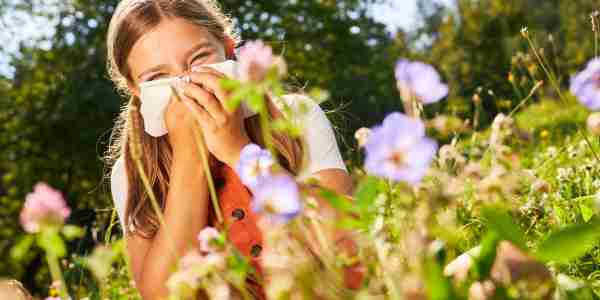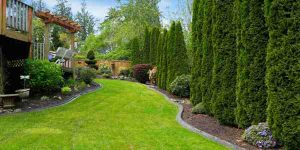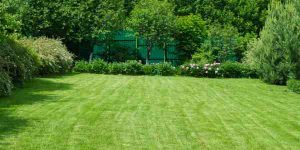Designing a Low-Allergy Garden

Designing a Low-Allergy Garden for Allergy Sufferers
Gardening is a fulfilling hobby that allows you to connect with nature, but for allergy sufferers, it can sometimes be a challenge. Pollen, mold, and certain plant chemicals can trigger allergic reactions, making it difficult to enjoy time in your garden. However, with thoughtful planning and plant selection, you can create a low-allergy garden that minimizes allergens while maintaining beauty and functionality. Here’s how to design a garden that’s friendly to allergy sufferers.
Understanding Allergens in the Garden
Before diving into the specifics of garden design, it’s essential to understand the common allergens in outdoor spaces:
- Pollen: Trees, grasses, and weeds release pollen into the air, which can cause allergic reactions.
- Mold: Moist environments can promote mold growth on leaves and in soil.
- Plant Chemicals: Some plants release volatile organic compounds (VOCs) that can irritate the respiratory system.
Selecting Low-Allergen Plants
Choosing the right plants is crucial for minimizing allergens. Focus on plants that produce little to no pollen and avoid those known to be high-allergen producers.
Low-Allergen Trees
- Dogwood (Cornus spp.)
- Benefits: Dogwood trees produce minimal pollen and have beautiful spring blooms.
- Varieties: Flowering dogwood (Cornus florida) and Kousa dogwood (Cornus kousa) are popular choices.
- Magnolia (Magnolia spp.)
- Benefits: Magnolia trees have large, showy flowers and low pollen levels.
- Varieties: Southern magnolia (Magnolia grandiflora) and star magnolia (Magnolia stellata) are excellent options.
- Red Maple (Acer rubrum)
- Benefits: Red maple trees have vibrant fall foliage and are low in pollen.
- Varieties: Red maple and October glory are good choices.
Low-Allergen Shrubs
- Boxwood (Buxus spp.)
- Benefits: Boxwood shrubs are evergreen, easy to shape, and produce little pollen.
- Varieties: American boxwood (Buxus sempervirens) and Japanese boxwood (Buxus microphylla) are commonly used.
- Azalea (Rhododendron spp.)
- Benefits: Azaleas have stunning flowers and low pollen levels.
- Varieties: Encore azaleas and Northern lights series are great options.
- Hydrangea (Hydrangea spp.)
- Benefits: Hydrangeas offer large, colorful flower clusters and are low in pollen.
- Varieties: Mophead hydrangea (Hydrangea macrophylla) and smooth hydrangea (Hydrangea arborescens) are popular.
Low-Allergen Flowers
- Begonia (Begonia spp.)
- Benefits: Begonias are available in various colors and have negligible pollen.
- Varieties: Wax begonia (Begonia semperflorens) and tuberous begonia (Begonia tuberhybrida) are excellent choices.
- Impatiens (Impatiens spp.)
- Benefits: Impatiens are shade-loving annuals with low pollen levels.
- Varieties: Busy Lizzie (Impatiens walleriana) and New Guinea impatiens (Impatiens hawkeri) are common.
- Petunia (Petunia spp.)
- Benefits: Petunias are colorful, versatile, and produce little pollen.
- Varieties: Grandiflora and multiflora petunias are widely used in gardens.
Creating a Low-Allergy Garden Environment
Beyond plant selection, designing the garden environment plays a crucial role in minimizing allergens.
1. Choose Hardscaping Over Lawns
Lawns are a significant source of grass pollen. Replacing or reducing the size of your lawn with hardscaping elements such as patios, pathways, and gravel areas can significantly reduce pollen exposure. Use materials like stone, brick, or concrete for easy maintenance and aesthetic appeal.
2. Use Mulch to Suppress Weeds
Mulch not only helps retain soil moisture but also suppresses weed growth, reducing the presence of allergenic weeds. Organic mulches like bark, wood chips, and pine needles are effective choices. Ensure that the mulch is kept dry to prevent mold growth.
3. Install a Drip Irrigation System
Overhead watering can promote mold growth and increase airborne pollen. A drip irrigation system delivers water directly to the roots, keeping foliage dry and reducing mold spores.
4. Maintain Cleanliness
Regularly clean garden tools, remove fallen leaves, and clear plant debris to minimize mold and pollen buildup. Keeping the garden tidy helps reduce allergen levels and creates a healthier environment.
5. Plant Strategically
Position high-allergen plants away from windows, doors, and outdoor seating areas to minimize direct exposure. Plant low-allergen species closer to living spaces to create a buffer zone.
Additional Tips for Allergy Sufferers
- Garden in the Evening: Pollen counts are usually lower in the evening, making it a better time for allergy sufferers to work in the garden.
- Wear Protective Gear: Wearing a mask, gloves, and sunglasses can help protect against pollen and mold exposure.
- Shower After Gardening: Washing off pollen and other allergens after spending time in the garden can help prevent allergic reactions.
Conclusion
Designing a low-allergy garden requires thoughtful planning and plant selection, but the rewards are well worth the effort. By choosing low-allergen plants, incorporating hardscaping elements, using mulch, and maintaining a clean garden environment, you can create a beautiful outdoor space that minimizes allergens. Allergy sufferers can enjoy the benefits of gardening without the discomfort of allergic reactions.
At Impact Landscapes, we specialize in creating customized garden designs that cater to your specific needs, including low-allergy gardens. Contact us today to learn how we can help you design and maintain a garden that you can enjoy year-round, free from allergy concerns.



